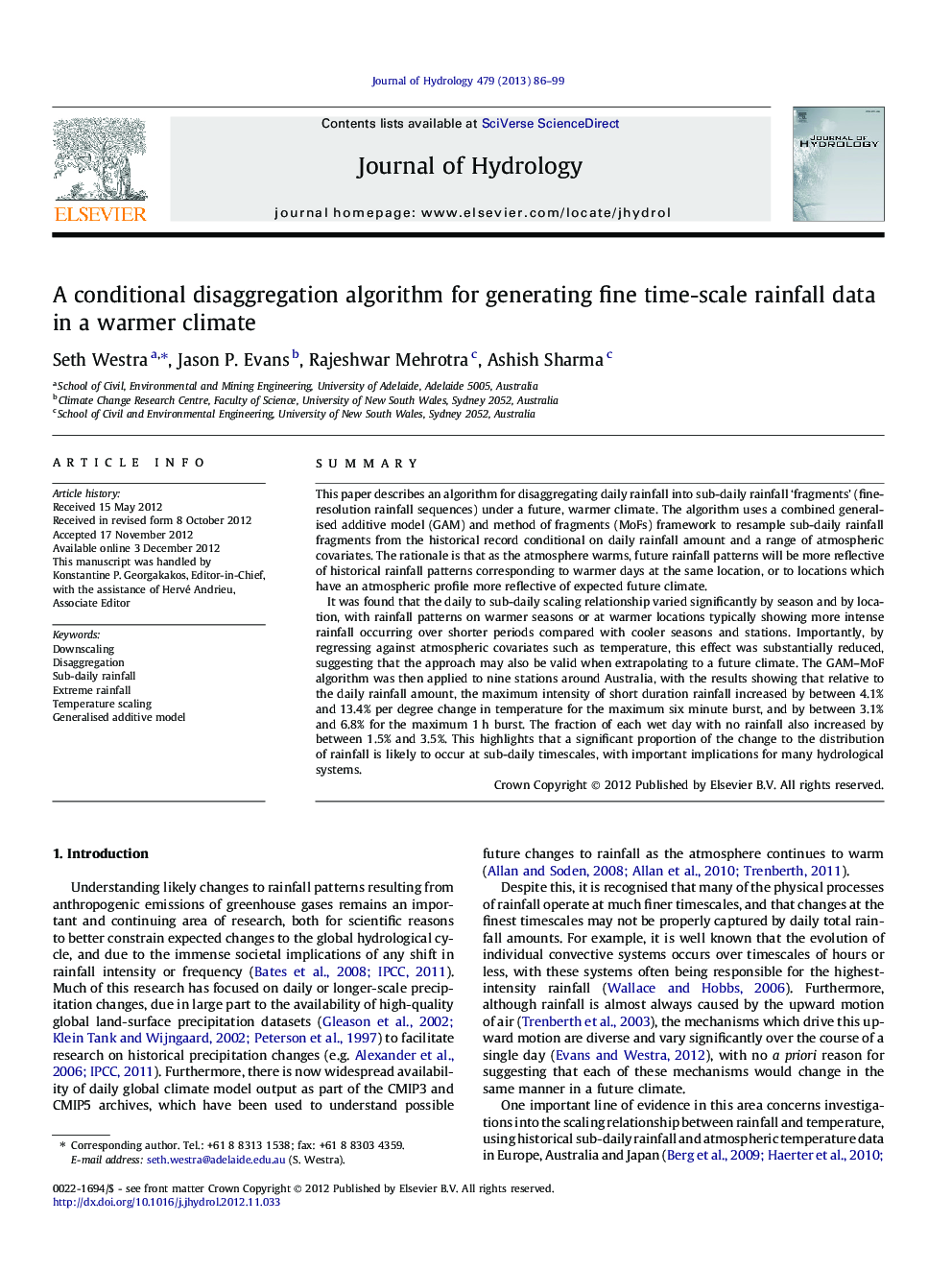| کد مقاله | کد نشریه | سال انتشار | مقاله انگلیسی | نسخه تمام متن |
|---|---|---|---|---|
| 4576551 | 1629969 | 2013 | 14 صفحه PDF | دانلود رایگان |

SummaryThis paper describes an algorithm for disaggregating daily rainfall into sub-daily rainfall ‘fragments’ (fine-resolution rainfall sequences) under a future, warmer climate. The algorithm uses a combined generalised additive model (GAM) and method of fragments (MoFs) framework to resample sub-daily rainfall fragments from the historical record conditional on daily rainfall amount and a range of atmospheric covariates. The rationale is that as the atmosphere warms, future rainfall patterns will be more reflective of historical rainfall patterns corresponding to warmer days at the same location, or to locations which have an atmospheric profile more reflective of expected future climate.It was found that the daily to sub-daily scaling relationship varied significantly by season and by location, with rainfall patterns on warmer seasons or at warmer locations typically showing more intense rainfall occurring over shorter periods compared with cooler seasons and stations. Importantly, by regressing against atmospheric covariates such as temperature, this effect was substantially reduced, suggesting that the approach may also be valid when extrapolating to a future climate. The GAM–MoF algorithm was then applied to nine stations around Australia, with the results showing that relative to the daily rainfall amount, the maximum intensity of short duration rainfall increased by between 4.1% and 13.4% per degree change in temperature for the maximum six minute burst, and by between 3.1% and 6.8% for the maximum 1 h burst. The fraction of each wet day with no rainfall also increased by between 1.5% and 3.5%. This highlights that a significant proportion of the change to the distribution of rainfall is likely to occur at sub-daily timescales, with important implications for many hydrological systems.
► We develop an algorithm to generate sub-daily rainfall data under a future climate.
► The algorithm is based on re-sampling from ‘similar’ days in the historical record.
► Variability in sub-daily rainfall mostly due to atmospheric temperature.
► Sub-daily rainfall patterns are expected to become shorter and more intense.
Journal: Journal of Hydrology - Volume 479, 4 February 2013, Pages 86–99